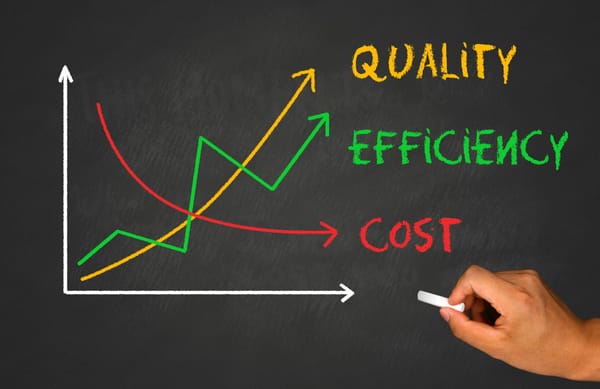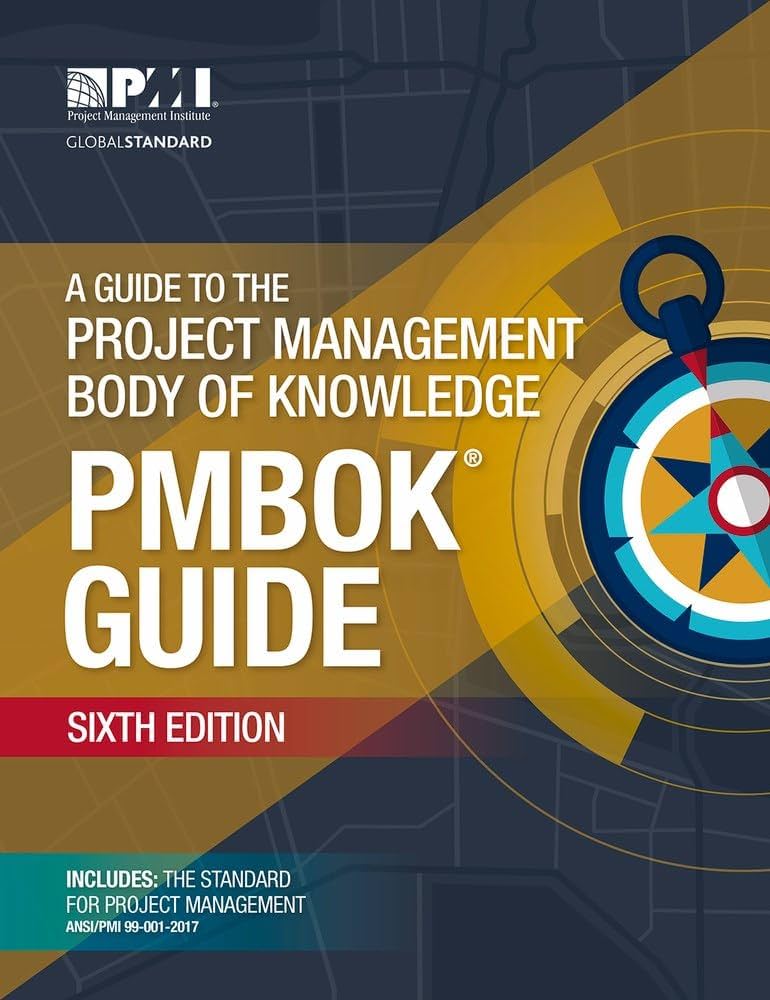
You know that feeling when you’ve been tasked with running a new project at work but don’t know where to start? The good news is there’s help. The Project Management Body of Knowledge, or PMBOK for short, is your new best friend.
This guide provides a systematic way to tackle any project, big or small. Whether you’re organising an office move, launching a new product, or planning your friend’s surprise birthday party, the PMBOK has you covered.
In this article, we’ll unpack exactly what the PMBOK is, how it can make your life easier, and why you should be using it for every project that comes your way.
Running a project without a solid plan and process is like trying to navigate a maze in the dark. The PMBOK shines a light on the path ahead. It’s a must-have resource for anyone juggling multiple responsibilities at work or in life. Consider this your personal introduction to a framework that can help reduce stress, save time, and set you up for project success.
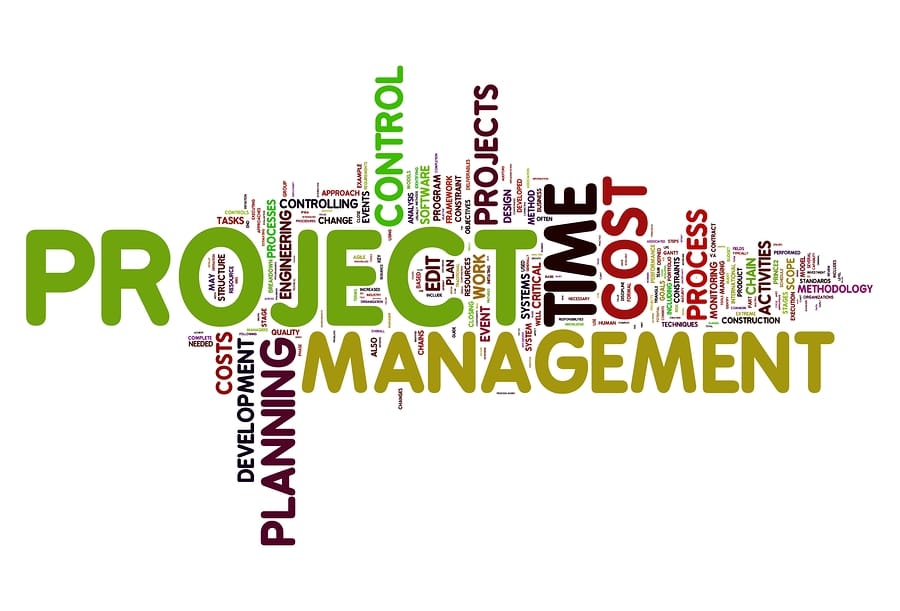
What Is the PMBOK?
The PMBOK® Guide is the Project Management Institute’s (PMI) internationally recognised standard for project management. It documents project management standards, methodologies, and guidelines for any type of project. Following the PMBOK will help you apply project management concepts and use a common vocabulary for any project.
What Does the PMBOK Cover?
The PMBOK covers 10 project management knowledge areas:
- Integration management: Coordinating all project elements
- Scope management: Defining and controlling what is included in the project
- Time management: Developing and controlling the project schedule
- Cost management: Developing and controlling the project budget
- Quality management: Meeting the quality standards for the project
- Human resource management: Organising and managing the project team
- Communications management: Generating, collecting, distributing, and managing project information
- Risk management: Identifying and controlling potential issues that could impact the project
- Procurement management: Obtaining goods and services for the project from outside the performing organisation
- Stakeholder management: Identifying people, groups, or organisations that could impact or be impacted by the project and managing their expectations and engagement
Why You Should Use the PMBOK
Following the PMBOK will give you a proven, systematic approach to managing any project. It provides guidelines, tools, and techniques to help you navigate each stage of the project lifecycle. Applying PMBOK concepts helps increase the chance of project success by giving you a common project management framework and language to work from. The PMBOK should be reviewed regularly to keep your knowledge and skills up to date as standards evolve. Using it will make you a more effective project manager and help you deliver successful projects, time and again.
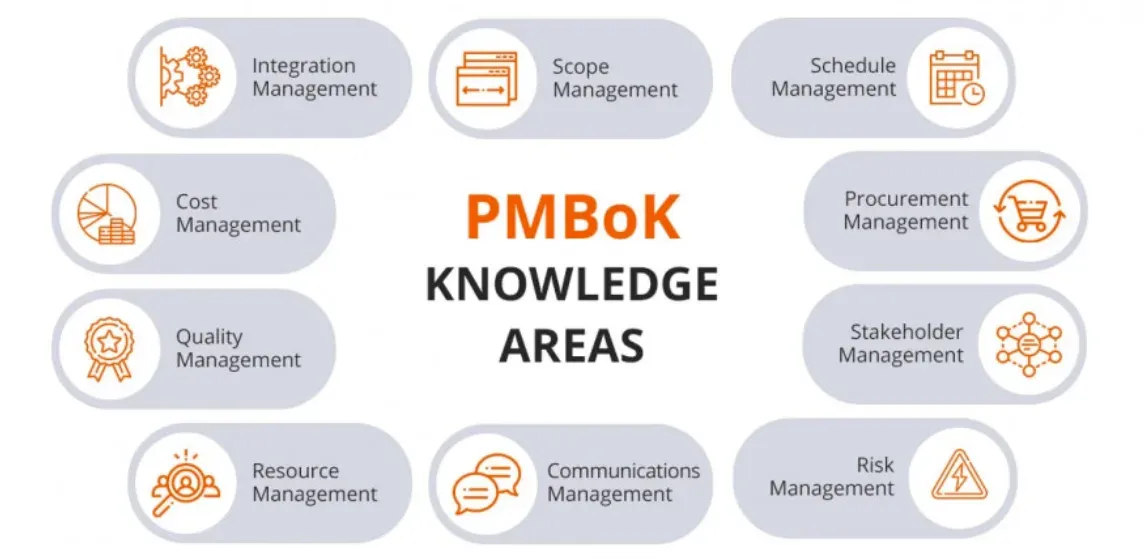
Core Concepts Covered in the PMBOK
The PMBOK® Guide is the gold standard for project management. It covers the fundamentals you need to organise anything from a small event to a massive infrastructure project. If you're managing a project of any size, the PMBOK is your guide to doing it efficiently and effectively.
Using the PMBOK, you'll develop plans in each of the 10 project management areas, execute those plans, monitor progress and make changes as needed. By systematically reviewing how the project's going in all areas, you uncover issues early and make sure nothing slips through the cracks.
The PMBOK is meant to be tailored to your specific project. Don't try to rigidly apply every process to every project. But do regularly review how you're applying the knowledge areas. Projects change, and the PMBOK gives you a framework for keeping everything on track no matter what gets thrown your way.
Why follow such a structured approach? Because it works. The PMBOK distils proven principles that help projects succeed. Using it, you'll deliver what's needed, on time and within budget. What more could you want?
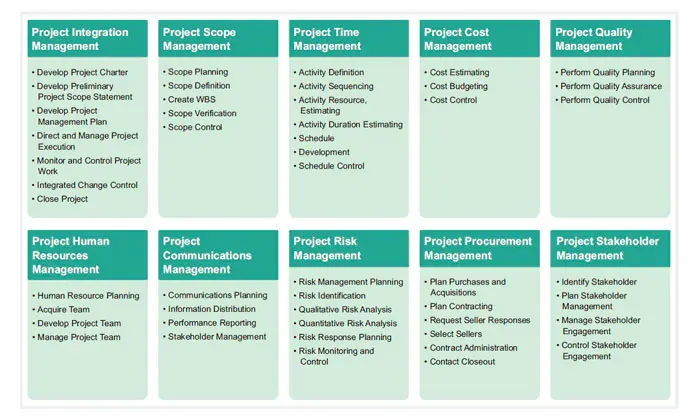
Key Benefits of Using the PMBOK
The PMBOK provides several key benefits for anyone managing a project.
Standardised Processes
The PMBOK establishes a common language and standardised set of processes for project management. This means you can apply the same approach to any project, allowing for efficiency and consistency. The processes span the entire project lifecycle, from initiation to closeout.
Best Practises
The PMBOK is based on best practices that have been proven effective for most projects. By following these best practices, you'll increase the likelihood of project success. The PMBOK covers best practices related to scope, schedule, cost, quality, risk, communications, and more.
Professional Development
Using and understanding the PMBOK is essential for anyone pursuing a career as a project manager. The PMBOK forms the basis of the Project Management Professional (PMP) certification, the gold standard credential for PMs. Even if you don't pursue the PMP, the PMBOK provides a framework to strengthen your PM skills.
Continuous Learning
The PMBOK is regularly reviewed and updated to reflect the latest in project management best practices. The guide is on a 5-year revision cycle, with the latest edition (the 6th) released in 2017. Familiarising yourself with the updates in each new edition helps ensure your knowledge and skills remain current. Project management, like any field, is constantly evolving, so continuous learning is key.
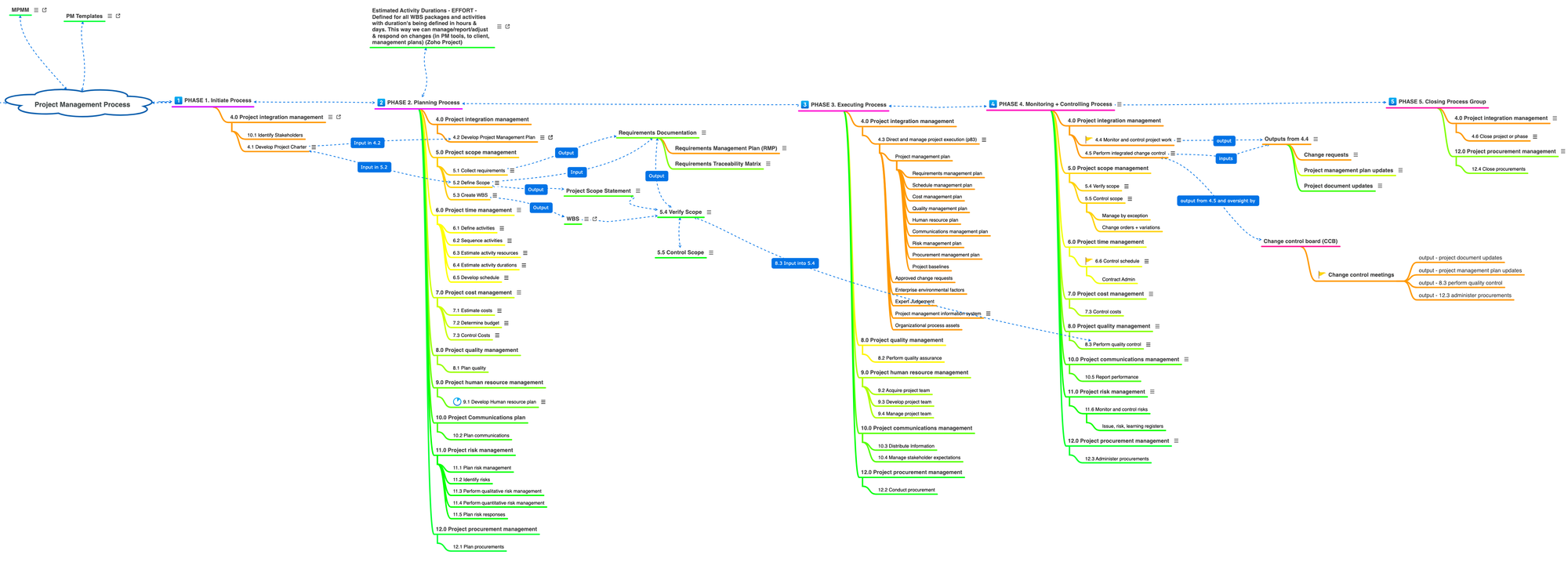
How to Use the PMBOK for Your Projects
The PMBOK® Guide is a resource for project managers to help them implement a systematic and standardised approach to managing projects. By following the processes and knowledge areas laid out in the PMBOK, you'll have a tried-and-true framework to ensure your projects stay on track.
Tailor It To Your Needs
The PMBOK is a broad set of guidelines, so you'll want to tailor it to your specific project's needs. Focus on the knowledge areas and processes that are most relevant for you. For example, if you're running an IT project, emphasise managing scope, time, cost, quality, and risk. If it's an event, focus more on communication and stakeholder management.
Use It From Start To Finish
Refer to the PMBOK at each stage of your project's lifecycle: initiating, planning, executing, monitoring and controlling, and closing. In the planning phase, use it to outline your scope, schedule, and budget. During execution and monitoring, follow its guidance on managing changes, risks, issues, and quality. And in the closing phase, follow the PMBOK's steps for finalising all activities and documenting lessons learned.
Review Regularly
Don't just refer to the PMBOK at the start of your project. Review it regularly throughout to make sure no steps have been missed. Hold frequent meetings with your team to discuss what's working well and where you need to improve your processes. The PMBOK is a living document that should evolve with each project.
Why It's Worth It
Using a systematic framework like the PMBOK leads to higher success rates for projects. You'll have clearly defined roles and responsibilities, streamlined processes for avoiding and mitigating issues, and a roadmap for closing the project smoothly. Your sponsors and stakeholders will appreciate your professional approach, and your team will work more collaboratively and efficiently.
While no two projects are the same, the PMBOK gives you a blueprint for managing the unpredictable. By tailoring its processes to your specific needs and reviewing regularly, you'll be well on your way to project management success.
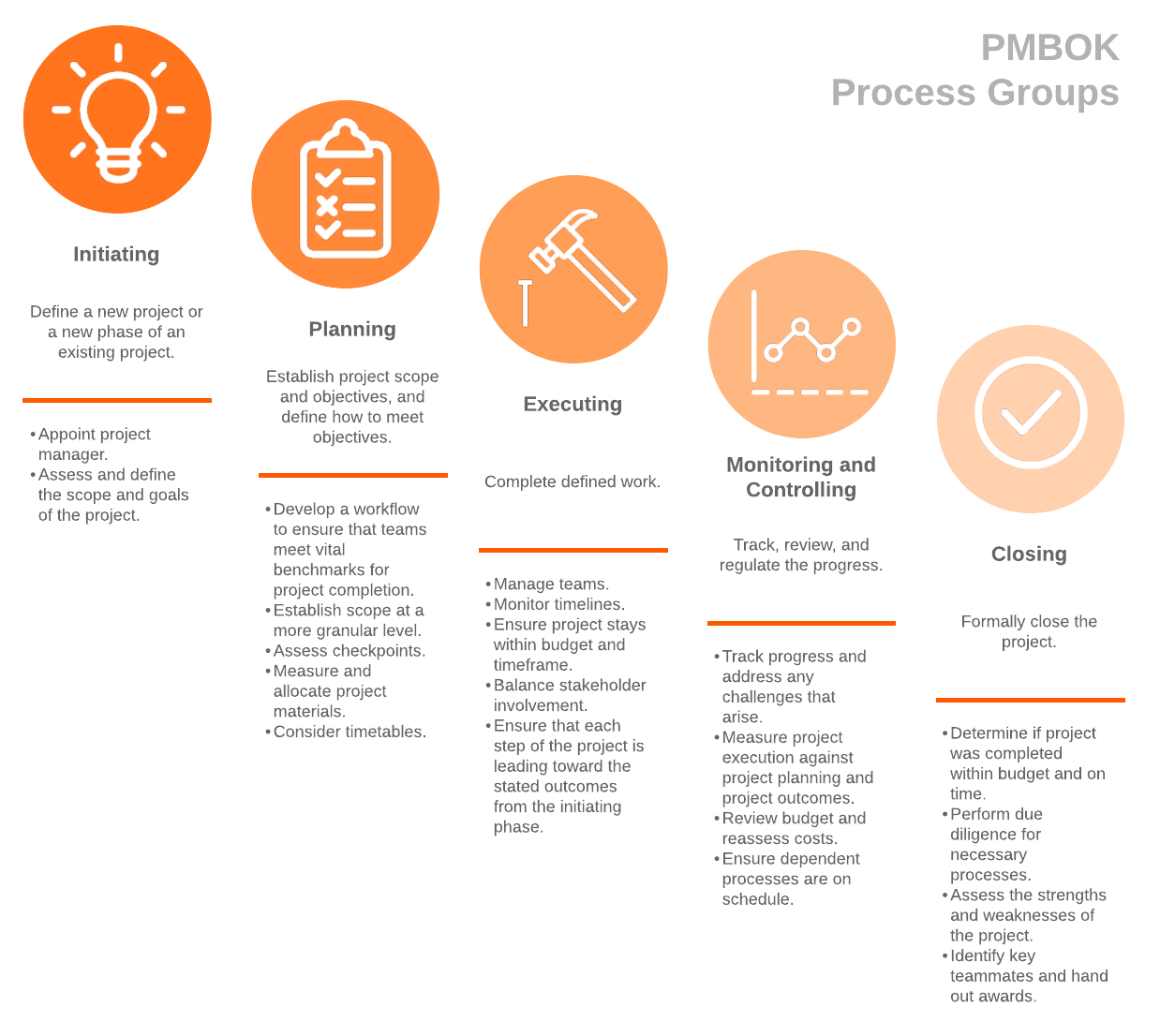
Remember to Review the PMBOK Regularly
The PMBOK is a living document that is constantly updated to reflect the latest project management best practices. That’s why it’s important to review it regularly to stay up-to-date with the most current information.
Check for Updates
The PMBOK is updated by the Project Management Institute (PMI) every 4-5 years, so make sure you have the latest edition. The most recent version at the time of writing is the 6th edition, released in 2017. When a new edition is published, PMI also releases updated courses and materials to help project managers transition to the new version.
Refresh Your Knowledge
Even if there haven’t been any major updates recently, it’s a good idea to re-read the PMBOK every 6-12 months. Project management is a complex topic, and it’s easy to forget some of the details or best practices over time. Brushing up on processes, tools and techniques will ensure you have the latest strategies and skills to effectively manage projects.
Focus on Knowledge Areas
The PMBOK outlines 10 project management knowledge areas, like integration management, scope management, and risk management. Pick one or two knowledge areas to review at a time so you can go into depth without feeling overwhelmed. Consider areas you find most challenging or want to strengthen your expertise in.
Try Interactive Exercises
In addition to re-reading content, complete some interactive exercises to reinforce your learning. Many project management training sites offer PMBOK quizzes, workbooks, simulations and video tutorials. Practise applying concepts to sample projects to strengthen your skills.
Keeping the PMBOK front of mind will help ensure you have the knowledge and judgement to manage projects successfully. While project management tools and software come and go, the principles in the PMBOK will stand the test of time. Make reviewing this essential resource a key part of your ongoing development as a project manager.
Conclusion
The key is not to see it as a rigid set of rules but rather as a guidance framework that will increase your chances of project success. Review it, adapt it to your needs, and make it work for you.
Project management is challenging enough without trying to reinvent the wheel, so leverage the decades of knowledge and experience that have gone into the PMBOK. Stay up to date with the latest version, use what works, and you'll be managing projects like a pro in no time.







